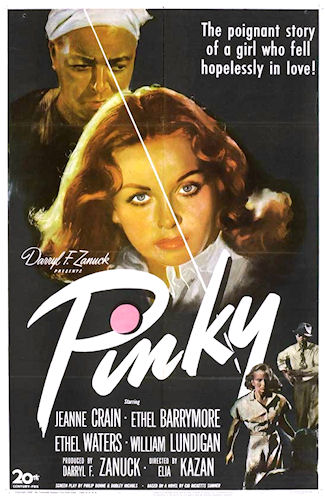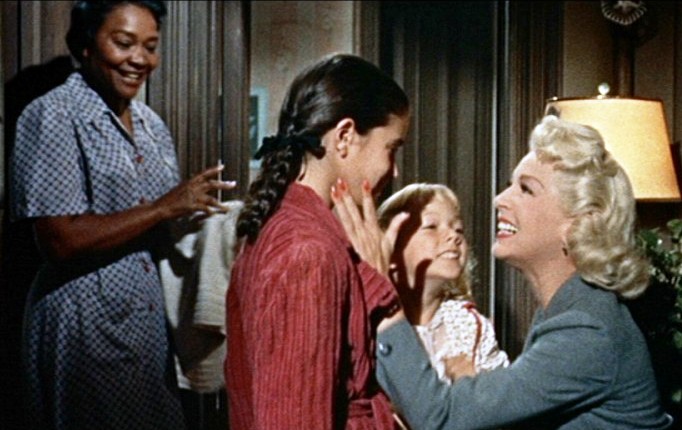 |
Craig White's Literature Courses
Mulatto & "Tragic Mulatto" Compare mestizo. |
 1949 film of biracial woman caught b/w two worlds |
Mulatto is an outdated term used to describe someone with one black parent and one white parent. The tragic mulatto myth dates back to 19th-century American literature.
The myth almost exclusively focuses on biracial individuals light enough to pass for white. In literature, mulatto characters are sometimes unaware of their black heritage. Upon discovering their African ancestry, tragedy ensues because such characters find themselves barred from white society and, thus, the privileges associated with whiteness.
Distraught at their fate as people of color, tragic mulattoes in literature often entered a downward spiral, unsure which community to join, sometimes ending in suicide.
In other narratives, these characters pass for white, cutting off their black family members to do so. In addition, such characters were frequently portrayed as sexually seductive, effeminate, or otherwise troubled because of their mixed blood. Overall, the tragic mulatto myth perpetuates the idea that the mixing of races is unnatural and harmful to offspring. Rather than blame racism for the challenges biracial people face, the myth of the tragic mulatto holds race-mixing responsible.
—adapted from Tragic Mulatto Myth by Nadra Kareem, http://racerelations.about.com/od/historyofracerelations/g/tragicmulattomyth.htm
The "tragic mulatta" figure is a woman of biracial heritage who must endure the hardships of African Americans in the antebellum South, even though she may look white enough that her ethnicity is not immediately obvious. As the name implies, tragic mulattas almost always meet a bad end. Lydia Maria Child's 1842 short story "The Quadroons" is generally credited as the first work of literature to feature a tragic mulatta, allegedly in an effort to garner support for emancipation and equal rights. Writer Eva Allegra Raimon notes that Child "allowed white readers to identify with the victim by gender while distancing themselves by race and thus to avoid confronting a racial ideology that denies the full humanity of nonwhite women." The passing character in Nella Larsen's Passing has been deemed a "tragic mulatta."
http://en.wikipedia.org/w/index.php?title=Tragic_mulatto&oldid=385268179
Examples from African American literature:
William Wells Brown, Clotel; or the President's Daughter (1853)--concerning supposed offspring of Thomas Jefferson and slave mistress
Frances Harper, Iola Leroy (1892)
Nella Larsen, Passing (1929)
Films:
Pinky (1949)
Imitation of Life (1934, 1959)
Show Boat
(1951)

scene from Imitation of Life (1959)